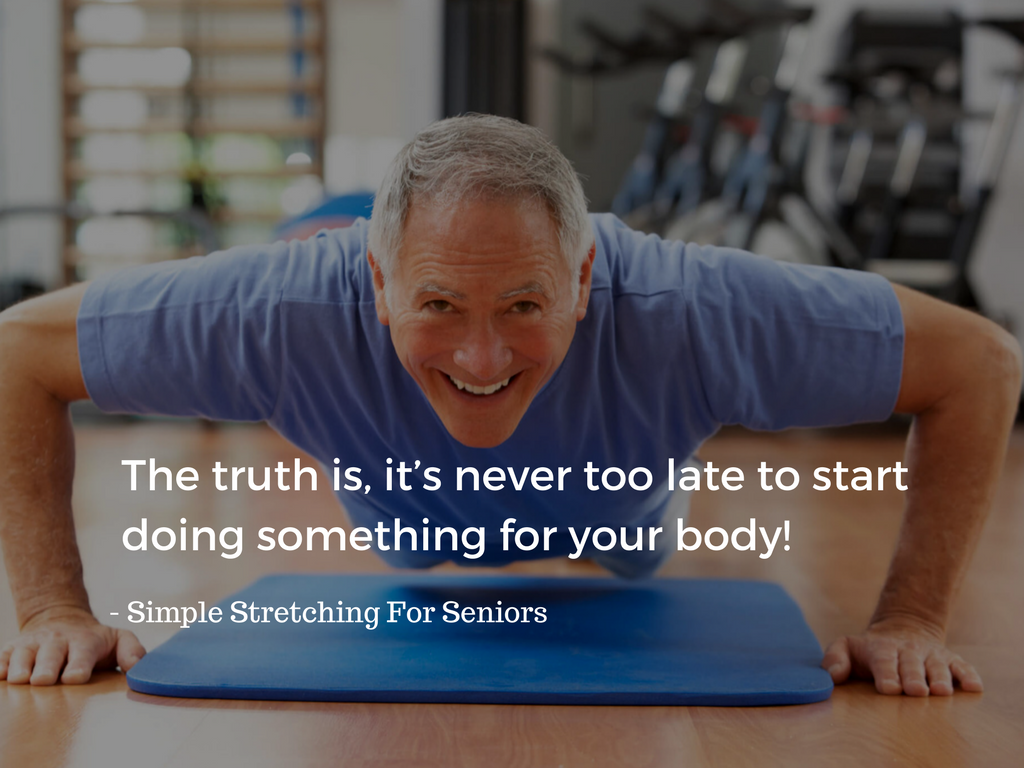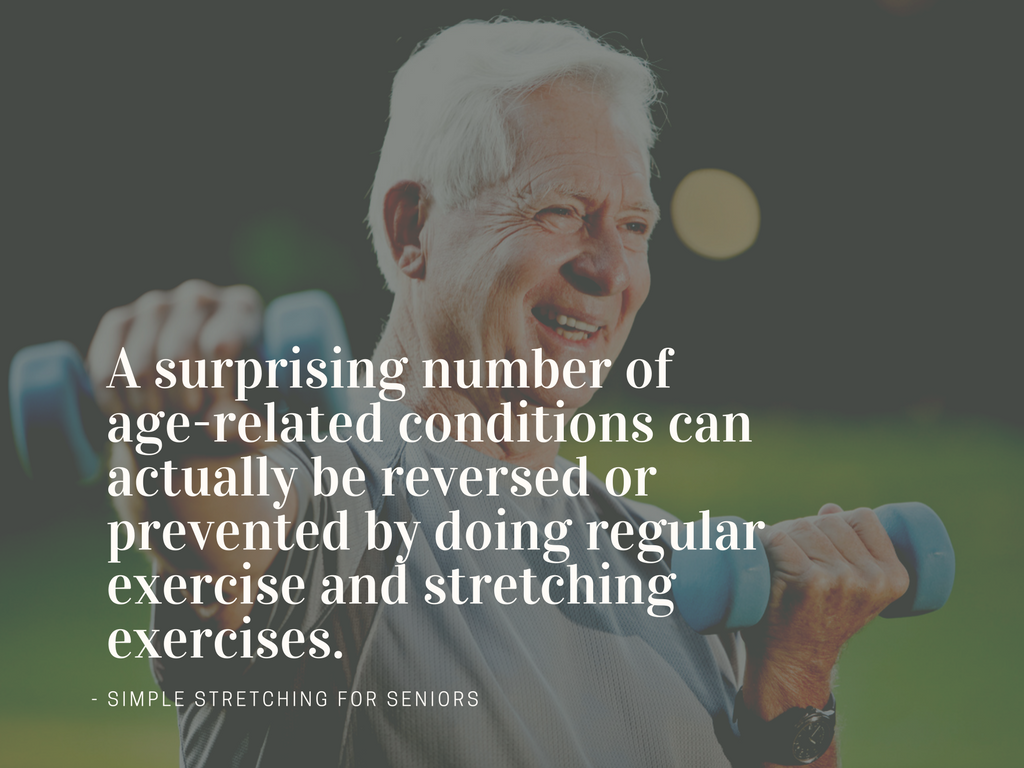Staying active is crucial for seniors who want to maintain their health, mobility, and independence. This guide explores safe and effective muscle building exercises for seniors, ensuring they can lead a healthier and more fulfilling life while building strength.

Contents
- 1 Why Muscle Building Exercises are Important for Seniors
- 2 Safe Guidelines for Muscle Building Workouts
- 3 Warm Up Tips for Seniors: Preparing Your Body for Muscle Building Exercises
- 4 Best Muscle Building Exercises for Seniors
- 5 Weekly Muscle Building Exercise Plan for Seniors
- 6 Tracking Progress with Muscle Building Exercises
- 7 Common Myths About Muscle Building for Seniors
- 8 Suggested Diagram: Weekly Muscle Building Exercise Plan for Seniors
- 9 Enhance Your Fitness Journey with These Products
- 10 Why These Products?
- 11 Conclusion
- 12 References
Why Muscle Building Exercises are Important for Seniors
Engaging in regular muscle building exercises offers numerous advantages for seniors, including:
- Improved Muscle Mass and Strength: Combat muscle loss (sarcopenia) associated with aging.
- Better Balance and Stability: Prevent falls and injuries by strengthening key muscle groups.
- Enhanced Bone Health: Strength training helps prevent osteoporosis by improving bone density.
- Increased Independence: Muscle-building exercises empower seniors to perform daily tasks more easily and with less strain.
- Improved Mobility: Helps seniors maintain joint mobility and flexibility, reducing pain from arthritis.
Safe Guidelines for Muscle Building Workouts
Before starting any muscle building regimen, seniors should consult their healthcare provider. Follow these safety tips to maximize the benefits of strength training and minimize risks:
- Start Slowly: Gradually increase the intensity and duration of muscle building exercises.
- Warm Up and Cool Down: Always warm up for 5-10 minutes before exercise and cool down afterward.
- Stay Hydrated: Drink water throughout the workout to stay properly hydrated.
- Listen to Your Body: Stop immediately if you feel pain or dizziness during muscle building exercises.
- Use Proper Equipment: Ensure you have the right gear for your workouts, including comfortable shoes and resistance bands.
Warm Up Tips for Seniors: Preparing Your Body for Muscle Building Exercises
Warming up before exercise is essential, especially for seniors. A proper warm-up increases blood flow to muscles, improves flexibility, and reduces the risk of injury. Below are some easy and safe warm-up tips tailored specifically for seniors to ensure they’re ready for muscle building exercises:
1. Gentle Cardio Warm-Up (5-10 Minutes)
Before starting strength training or any muscle building exercises, it’s crucial to gradually increase your heart rate. This helps your body transition from rest to activity without overloading your muscles.
- Walking: A slow-paced walk, either indoors or outdoors, for 5-10 minutes is perfect. This helps loosen up the legs, hips, and back.
- Marching in Place: If you prefer to stay indoors, march in place for 5 minutes. Focus on lifting your knees high to engage your core and legs.
- Arm Circles: Extend your arms to the side and make small, controlled circles, gradually increasing the size. This activates the shoulders and upper back.
2. Dynamic Stretching for Flexibility
Dynamic stretches involve movement and should be done while warming up. These stretches help improve joint flexibility and prepare the muscles for exercise. Focus on the major muscle groups to avoid stiffness.
- Leg Swings: Hold onto a chair or wall for balance. Swing one leg forward and backward, gradually increasing the range of motion. Repeat with the other leg.
- Torso Twists: Stand with your feet shoulder-width apart. Gently twist your torso from side to side, keeping your hips stable. This warms up the spine and oblique muscles.
- Side Lunges: Step out to the side, bending one knee while keeping the other leg straight. This stretches the inner thighs and prepares the legs for squats or other lower body exercises.
3. Joint Mobility Exercises
Seniors may experience stiffness in their joints, especially in the knees, hips, and shoulders. Joint mobility exercises can help improve range of motion and reduce discomfort during workouts.
- Ankle Rolls: Sit in a chair and lift one foot off the floor. Slowly roll your ankle in a circular motion, 10 times in each direction. Repeat with the other foot.
- Hip Openers: Stand tall and hold onto a chair for balance. Lift one knee to your chest, then open it out to the side. This helps loosen the hip joints.
- Shoulder Rolls: Roll your shoulders forward and backward in a circular motion. This helps improve shoulder mobility and reduces tension.
4. Breathing Exercises
Proper breathing helps oxygenate the muscles, improves endurance, and aids concentration during the workout.
- Deep Breaths: Inhale deeply through your nose, hold for a moment, and then exhale through your mouth. Repeat 5-10 times to relax the body and focus the mind.
- Abdominal Breathing: Place one hand on your stomach and take a slow breath in, making sure your stomach rises as you inhale. This engages the diaphragm and prepares the body for exercise.
5. Focus on Key Areas
Seniors should pay extra attention to warming up key muscle groups that are most commonly engaged during muscle building exercises. This includes the legs, back, shoulders, and core.
- Hip Flexor Stretch: Stand tall, take a step back with one leg, and gently lower the back knee towards the floor. Hold for 20-30 seconds, then switch legs. This warms up the hips and lower body.Wrist and Hand Stretches: If you’re using resistance bands or light dumbbells, gently stretch your wrists by holding your arm out in front and pulling back on your fingers with the opposite hand.
Starting your exercise routine with a proper warm-up is crucial for seniors to prevent injury and ensure an effective workout session. By incorporating these warm-up tips, you’ll enhance your flexibility, improve muscle function, and feel more confident as you progress through your muscle building exercises. Remember, always listen to your body and consult with your healthcare provider if you have any concerns before beginning a new exercise routine.

Best Muscle Building Exercises for Seniors
Here are the top muscle building exercises for seniors, focusing on strengthening major muscle groups safely:
1. Resistance Band Exercises
Resistance bands are an excellent option for seniors looking to build muscle without heavy weights:
- Chest Press: Target your chest and arms.
- Leg Press: Strengthens the legs and hips.
- Shoulder Press: Enhances upper body strength and stability.
2. Bodyweight Exercises
Bodyweight exercises are perfect for seniors who prefer to train without equipment:
- Wall Push-Ups: A gentle variation to build arm and chest muscles.
- Squats: Strengthen the legs, glutes, and core.
- Leg Raises: Target the hips, thighs, and core muscles.
3. Dumbbell Workouts
Light dumbbells are ideal for seniors who are comfortable with some weightlifting:
- Bicep Curls: Focus on arm strength.
- Shoulder Presses: Build shoulder and upper body strength.
- Seated Dumbbell Rows: Strengthen the back and improve posture.
4. Core Strengthening Exercises
A strong core supports overall stability and mobility:
- Seated Marching: Sit in a chair and lift one knee at a time to activate the core.
- Plank Variations: Start with modified planks on the knees or against a wall.
- Pelvic Tilts: Strengthen the lower back and abdominal muscles.
Weekly Muscle Building Exercise Plan for Seniors
A balanced weekly plan to build muscle, improve flexibility, and increase overall fitness:
| Day | Activity | Duration |
|---|---|---|
| Monday | Resistance Band Exercises | 20 minutes |
| Tuesday | Dumbbell Strength Training | 20 minutes |
| Wednesday | Yoga or Stretching | 30 minutes |
| Thursday | Walking or Swimming | 30 minutes |
| Friday | Bodyweight Exercises | 20 minutes |
| Saturday | Light Dumbbell Workout | 20 minutes |
| Sunday | Rest or Gentle Stretching | 15-20 minutes |
Tracking Progress with Muscle Building Exercises
To track progress and ensure you’re building muscle effectively:
- Record Workouts: Keep a log of the exercises you perform, along with the duration and intensity.
- Set Realistic Goals: Focus on achievable milestones, such as increasing repetitions or weight over time.
- Celebrate Improvements: Recognize progress in strength and muscle definition.
Common Myths About Muscle Building for Seniors
- “Seniors can’t build muscle”: It’s entirely possible for seniors to gain muscle and strength with the right exercises.
- “Strength training is too dangerous for older adults”: When done correctly, muscle building exercises are safe and incredibly beneficial.
- “You need to lift heavy weights”: Seniors can build muscle with lighter weights or resistance bands.
Suggested Diagram: Weekly Muscle Building Exercise Plan for Seniors
| Day | Activity | Duration |
|---|---|---|
| Monday | Walking | 30 minutes |
| Tuesday | Resistance Band Exercises | 20 minutes |
| Wednesday | Yoga | 30 minutes |
| Thursday | Swimming | 30 minutes |
| Friday | Light Dumbbell Workout | 20 minutes |
| Saturday | Tai Chi | 30 minutes |
| Sunday | Rest or Gentle Stretching | 15-20 minutes |
Enhance Your Fitness Journey with These Products
As we get older, staying active becomes even more important to maintaining our strength, flexibility, and overall well-being. Along with the muscle-building exercises we’ve shared in this article, incorporating the right tools and resources can make a significant difference in your fitness journey. Here are a couple of great products that can help you achieve your goals safely and effectively:
1. Total Body Fitness for Men Over 40
For men over 40, it’s essential to follow a fitness routine that supports healthy aging. The Total Body Fitness for Men Over 40 program is specifically designed to help men maintain muscle mass, strength, and energy. This guide provides a proven approach to muscle-building exercises tailored for the unique needs of men in their 40s and beyond. Whether you’re looking to boost your strength or improve your overall fitness, this resource will give you the tools to achieve lasting results.
Get started today and unlock your full fitness potential:
Total Body Fitness for Men Over 40
2. Stretching for Seniors: Flexibility and Mobility
Stretching plays a key role in preventing injuries and maintaining joint mobility as we age. The Stretching for Seniors program is designed to help seniors improve flexibility and reduce stiffness. It provides easy-to-follow routines that promote better posture, reduced muscle tension, and enhanced balance. Perfect for seniors who want to stay flexible and active, this guide ensures that every stretch is safe and effective.
Get started today and feel the difference with simple, effective stretching routines:
Stretching for Seniors
Why These Products?
- Tailored for Seniors: Both of these resources are specifically designed with seniors in mind, ensuring that each exercise and routine is safe, effective, and appropriate for older adults.
- Comprehensive Guidance: You’ll get step-by-step instructions that make it easy to incorporate exercises into your daily routine.
- Improve Mobility and Strength: Whether you’re focusing on building muscle or improving flexibility, these products can help you achieve your fitness goals in a sustainable way.
Taking the right steps towards your fitness goals is essential for maintaining your health as you age. These products offer valuable insights and routines that can make a real difference in your ability to stay active, strong, and independent.

Conclusion
Building muscle is essential for seniors to maintain strength, independence, and overall health. By incorporating safe and effective muscle building exercises into their routine, seniors can enjoy better mobility, improve bone density, and enhance their overall quality of life. Start today and experience the transformative power of strength training!
References
To ensure the information provided in this article is accurate and up-to-date, we have referenced reputable sources in the field of fitness and health. Below are some of the trusted references that back up the content shared:
American Council on Exercise (ACE)
“The Benefits of Strength Training for Seniors”
Available at: https://www.acefitness.org
This article highlights the importance of strength training exercises for older adults and offers a range of exercises that promote muscle growth and overall health.
National Institute on Aging (NIA)
“Exercise and Physical Activity: Your Everyday Guide from the National Institute on Aging”
Available at: https://www.nia.nih.gov
Provides comprehensive guidelines for seniors on how to stay active, including the benefits of physical activity and suggested exercise types for older adults.
Harvard Health Publishing
“Exercise and Aging: Can Exercise Slow the Aging Process?”
Available at: https://www.health.harvard.edu
Explores the long-term effects of regular exercise on aging and how it contributes to muscle preservation, cognitive function, and overall health in older individuals.
Mayo Clinic
“Strength Training for Seniors: How to Stay Safe and Get the Benefits”
Available at: https://www.mayoclinic.org
This resource offers essential safety tips and guidelines for seniors starting a strength training regimen, ensuring that the exercises are done correctly and safely.
Journal of Aging and Physical Activity
“Effects of Resistance Training on Muscle Mass and Function in Older Adults”
Available at: https://journals.humankinetics.com
A peer-reviewed study that highlights the positive effects of resistance training on muscle mass and functional abilities in older adults.
Centers for Disease Control and Prevention (CDC)
“Physical Activity for Older Adults”
Available at: https://www.cdc.gov
The CDC provides evidence-based recommendations for physical activity among seniors, emphasizing the role of exercise in reducing chronic diseases and improving quality of life.



